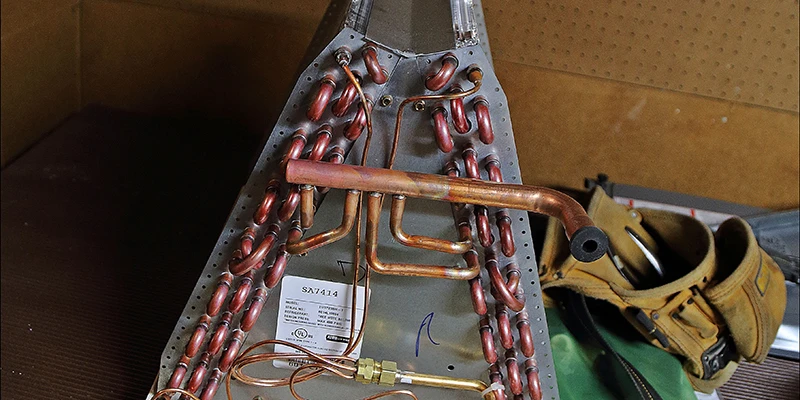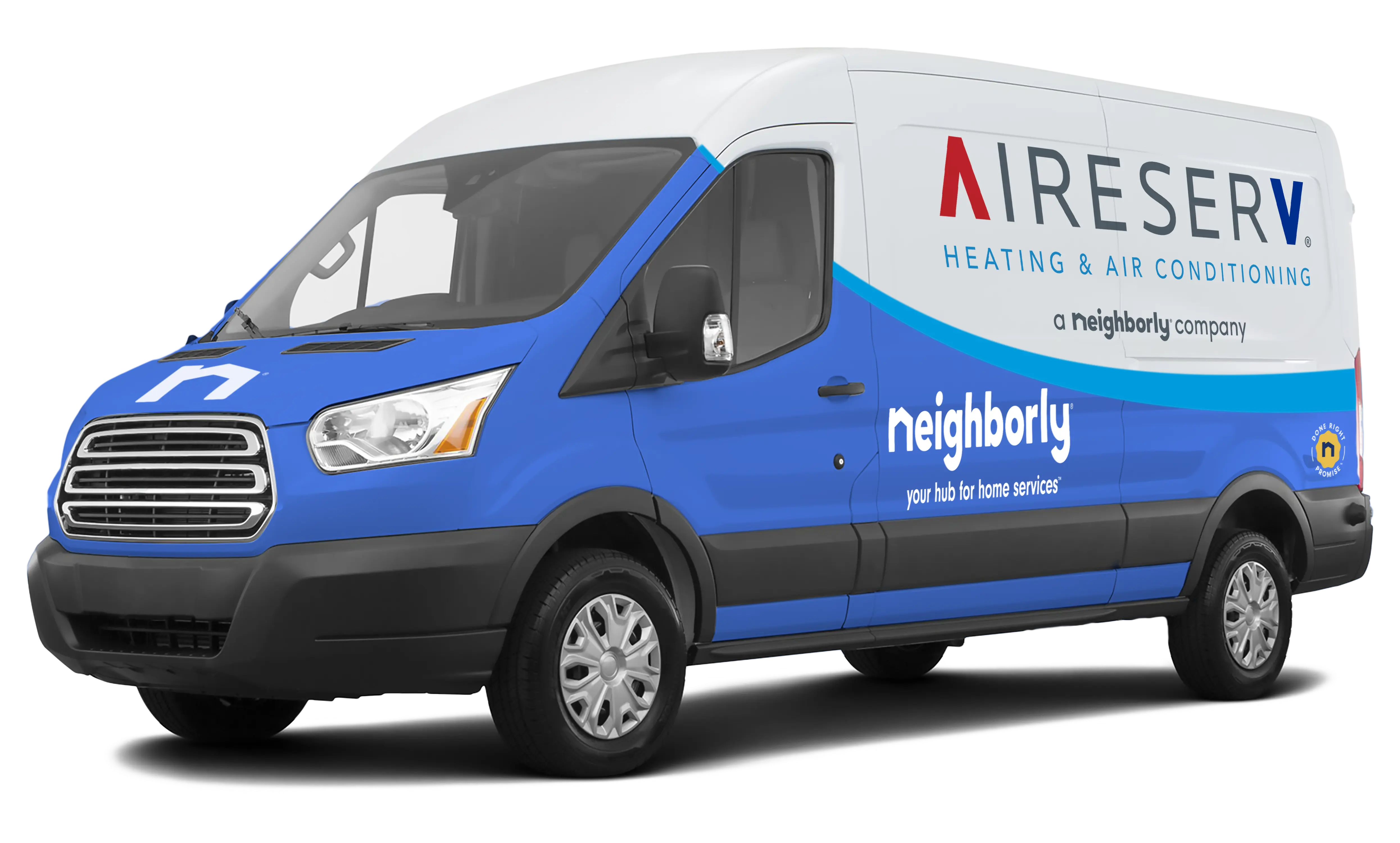
Your air conditioning unit cools inside air, no matter how hot it gets outside. Invented in 1902 by Willis Carrier, air conditioning makes summer bearable. Essential maintenance, like AC coil cleaning, helps your system run better and last longer.
Cleaning air conditioning coils maintains efficiency so your home stays comfortable. It also ensures that your system is not overworked and will keep energy costs reasonable. Not sure how to clean air conditioner coils? Luckily, we’ve got you covered.
Why It’s Important to Keep AC Coils Clean
AC units have two coils: an evaporative coil inside the home and a condenser outside. These coils work as a heat exchange, and airflow through the coils removes warmer air in the home, replacing it with the cooled air from the condenser coil. The coils are copper with thin aluminum strips, known as fins, providing ample surface area for efficient heat exchange.
Over time, dirt buildup on coils can impact performance, robbing your system of efficiency. The buildup reduces the surface area used for heat exchange, and your AC may begin to struggle as it’s forced to work longer and harder than usual to meet your cooling needs. Extra wear on your system is prevented by cleaning AC coils so your home stays cool.
Signs Your AC Unit Might Need Cleaning
How can you tell that it’s time to clean your AC coils? There are certain signs that indicate the need for AC coil cleaning. These include:
- Longer AC running time
- Reduced airflow
- Higher energy bills
- Musty odor
- Strange noises from the AC unit
- AC turns on and off frequently
- Ice on the outdoor condenser coil
- Warm air from vents
- Higher indoor humidity
AC coil cleaning pays for itself in energy savings and prevents the need for emergency service on the summer season’s hottest days. When coils are dirty, the system works harder, which can lead to ice over, resulting in system shutdown.
How Often Should You Clean AC Coils?
The US Department of Energy recommends cleaning AC coils once a year. Checking the area around your outdoor unit for dirt or debris and looking for buildup on the protective cover, along with remembering to change your filters regularly, can prevent some excessive buildup, but sometimes more frequent cleaning is needed.
If you have pets, forget to change filters regularly, or live in an area with higher levels of dirt or pollen, it can create the need to clean your AC coils more frequently. Also, cleaning coils before summertime usage can help proper functioning and ensure cooler temperatures during the hottest months.
Cleaning Your AC Coils Step-By-Step
While the easiest way to clean AC coils is to pick up the phone and have professional maintenance performed during your regular pre-season service, knowing how to clean your AC coils can come in handy. Even when you never plan to DIY AC coil cleaning, it’s always a good idea to know what an expert would do and tell you how you could tackle this task yourself.
When cleaning AC coils, you will need a few tools, including a specialty fin-cleaning brush that is made to clean coils without causing damage. You may also need:
- Low-pressure spray nozzle
- Garden hose or other water source
- Commercial cleaning agent OR homemade mild cleaning solution
- Gloves
- Eye protection
- Compressed air for short air bursts
- Shop vac
- Flashlight
- Screwdriver or drill
Shut your AC unit off by switching off the circuit breaker in the electrical panel (it should be clearly labeled) to ensure safety while cleaning AC coils. Cleaning fluids and electricity don’t mix. Then, follow these steps.
Cleaning the Evaporative and Condenser Coils
- Gain Access to the Coil. Evaporative coils are part of your home's indoor unit. They can be in a cabinet, attached to the furnace, or inside the air handler unit. If you are unsure, check your owner’s manual. Condenser coils are located outside the home.
- Identify the Coil’s Location. The evaporative coil is integrated into an A-framed design and resembles small fins, similar to your car’s radiator. The larger unit outside is the condenser coil, which has a sturdy cover to protect it. In most cases, the coil is wrapped around the other AC components.
- Loosen Debris and Remove What You Can. Use the fin brush and your hands to remove as much of the buildup on the coil as possible. The fin brush helps you get into tight spaces without bending the AC coil’s fins. Do this for both coils.
- Use Compressed Air On the Condenser Coil. This is not recommended for indoor coils as it can push dirt and dust into the home. Use compressed air in the opposite direction of typical airflow to dislodge stubborn buildup on the condenser.
- Use a Shop Vac. For both coils, using a shop vac after dislodging debris gets any smaller bits out of the system.
- Spray the Coil With Water Under Low Pressure. Gently spray the coils with water to dislodge any debris still attached. Never use a pressure washer, steam cleaner, or other method, as it may damage your system.
- Apply Coil Cleaner. Commercial coil cleaners are available in various forms. You can get no-rinse, foaming, and aerosol cleaners, which can make the process easier. A homemade solution of a mild detergent and water can also be used. Nothing highly acidic should touch copper coils to avoid damage, and the manufacturer’s instructions should be followed carefully. If debris remains, repeat the process.
- Rinse-off cleaner. Once the cleaner has done its job, gently rinse off any remaining residue. You can skip this if you choose a no-rinse cleaner. Now is also the time to straighten any bent fins with your fin-cleaning brush.
- Replace the access panel cover. Carefully reattach the access panel cover, re-taping the seams if needed.
- Use Shop Vac to Clean Outdoor Unit Cover. Once the coil is clean, it is a good idea to use the shop vac to clean anything that may have accumulated on the protective cover. This helps decrease future buildup and ensures better performance.
Once these steps are complete, restore the power and enjoy how well your home cools to a comfortable temperature.
When It’s Time to Call a Professional
Cleaning AC coils sounds easy, but heavy buildup on the coil or potential damage to the system requires a professional. While DIY AC coil cleaning is possible, it’s usually better to have an HVAC service professional clean the air conditioning coil for you.
At Air Serv®, not only are our experts highly skilled, but they are trained to identify problems you may not see. When our service professionals perform your AC coil cleaning, you can rest assured the job was done well and done right. An Air Serv expert is only a phone call away.
Cool Comfort Starts With Clean AC Coils
It is critical to keep your AC in optimal working order for a comfortable home. Keeping the area around your air conditioning and performing regular filter changes according to the manufacturer's specifications are helpful to keep away heavy buildup. This will keep your air conditioning unit running smoothly year-round.
The best way to maintain your air conditioning coils is to have regular service from the professionals at Air Serv. We can provide cleaning as part of a yearly service visit. Keeping coils clean gives effective, efficient cooling when you need it. Don’t let AC coils get you hot under the collar. Schedule with AirServ and stay cool as a cucumber!

